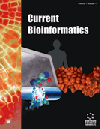
Full text loading...
We use cookies to track usage and preferences.I Understand

G-protein coupled receptors (GPCRs) represent a large family of membrane proteins, distinguished by their seven-transmembrane helical structures. These receptors play a pivotal role in numerous physiological processes. Nowadays, many researchers have proposed computational methods to identify GPCRs. In the past, we introduced a powerful method, EMCBOW-GPCR, which was designed for this purpose. However, the feature extraction technique employed is susceptible to out-of-vocabulary errors, indicating the potential for enhanced accuracy in GPCR identification.
To solve the challenges, we propose a novel approach termed GPCR-AFPN. This method leverages the FastText algorithm to effectively extract features from protein sequences. Additionally, it employs a powerful deep neural network as the predictive model to improve prediction accuracy.
To validate the efficacy of the proposed GPCR-AFPN method, we conducted five-fold cross-validation and independent tests, respectively. The experimental results indicate that GPCR-AFPN outperforms existing methods.
Overall, our proposed method, GPCR-AFPN, can improve the accuracy of GPCR identification. For the convenience of researchers interested in applying our latest advancements, a user-friendly webserver for GPCR-AFPN is available at www.lzzzlab.top/gpcrafpn/, and the corresponding code can be downloaded at https://github.com/454170054/GPCR-AFPN.

Article metrics loading...

Full text loading...
References


Data & Media loading...